The venerable second-generation Nissan Leaf has received a significant price discount. Originally starting from $50,990 before on-road costs, prices have been reduced by over $10,000. Nissan Leaf prices now start from $39,990 driveaway to $49,990 driveaway for the e+.
The Leaf features two variants, with a small battery Leaf and larger battery Leaf e+ offering 270km and 385km of claimed driving range (WLTP) respectively.
A decade after the nameplate first launched in Australia, it continues to be the only small all-electric hatch offered locally – before the Cupra Born, MG4 and GWM Ora Cat arrive in 2023 – and is one of the few electric vehicles to have “reasonable” supply amid the ongoing vehicle supply crisis.
The Nissan Leaf is eligible for what's left of the EV incentives. For further information, check out our comprehensive guide.
The updated 2023 Leaf is available now in showrooms. In addition to the Cupra, MG and GWM, it competes with the BYD Atto 3, MG ZS EV and Hyundai Kona Electric, plus the more expensive Tesla Model 3, Mini Electric and more.
Learn more about the Nissan Leaf
Size and design
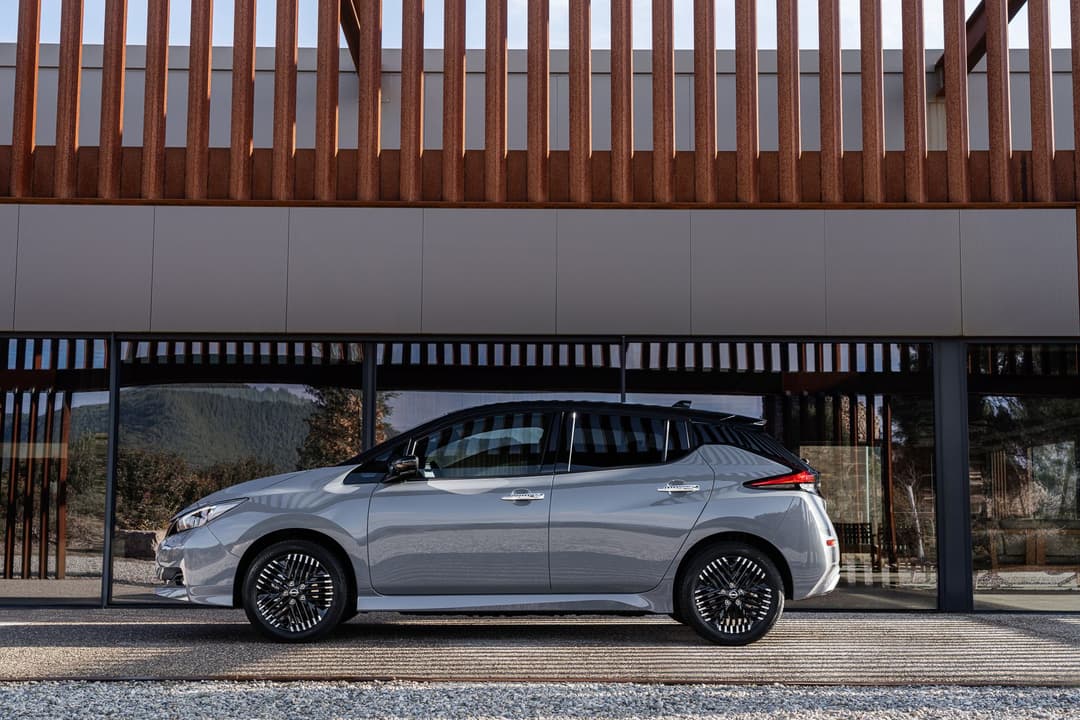
Manufactured in Nissan’s Sunderland factory in the United Kingdom, the second-generation Nissan Leaf first launched in 2018 with a ‘V-Motion’ grille, aerodynamic shape and gloss black painted top-half of the tailgate.
The exterior is mostly unchanged, but the minor update does add a subtly revised blacked-out front grille and rear diffuser, darkened headlight housings, sportier rear spoiler and side sills, and Nissan’s new logo badges.
Most noticeable is the Leaf’s new standard 17-inch alloy wheel design made up of thin multi-spoke lines in a gloss black finish flanked by a contrasting silver tip at the outer edge.
However, the pre-update’s blue exterior accents on the front bumper and side sills exclusive on the Leaf e+ is no longer standard, but available as an accessory.
There are no changes to the interior of the updated pure-electric hatch.
The Leaf has two ISOFIX child seat anchor points and tethers at the outboard rear row seats.
Range and powertrain
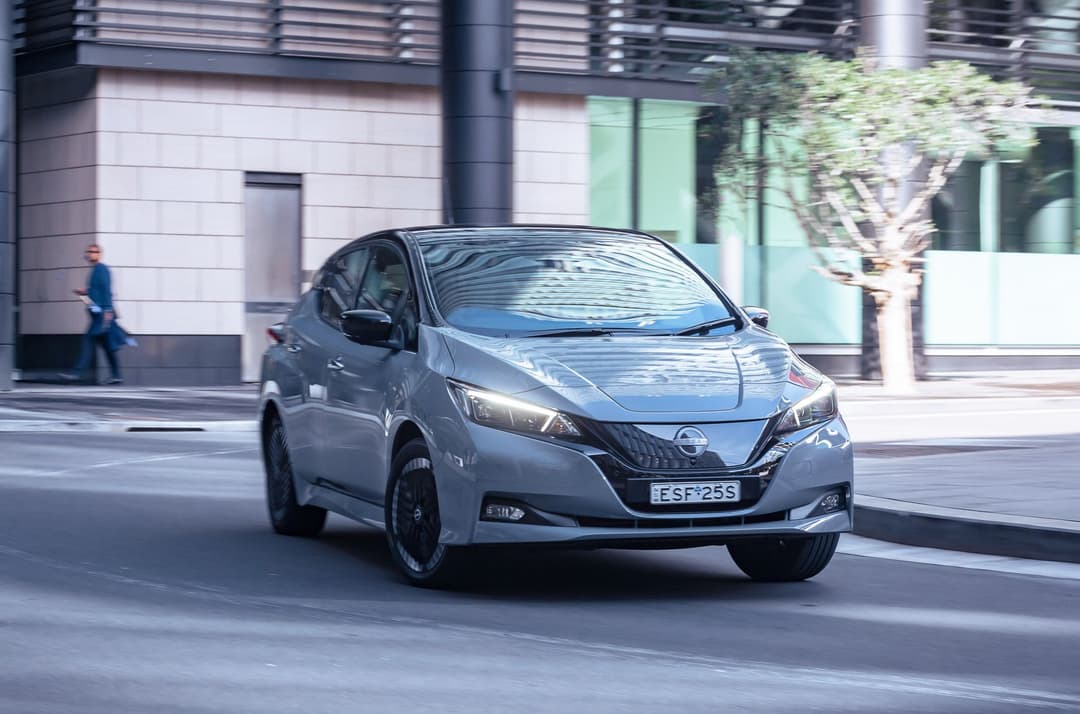
The Leaf line-up continues to offer the same two variants distinguished by their battery capacities and powertrains.
The base Leaf has a 39kWh (usable) passively air-cooled battery with a claimed combined driving range of 270km (WLTP) from a full charge. A single electric motor drives the front wheels, which can accelerate from 0-100km/h in 7.9 seconds.
The flagship Leaf e+ boasts a larger 59kWh (usable) battery with a longer claimed range of 385km (WLTP). The front-mounted electric motor gains 50kW more power and 20Nm more torque than the standard Leaf, which cuts the 0-100km/h sprint to 6.9 seconds.
Australian-bound Nissan Leaf’s don’t offer a heat pump and aren't rated to tow.
Charging
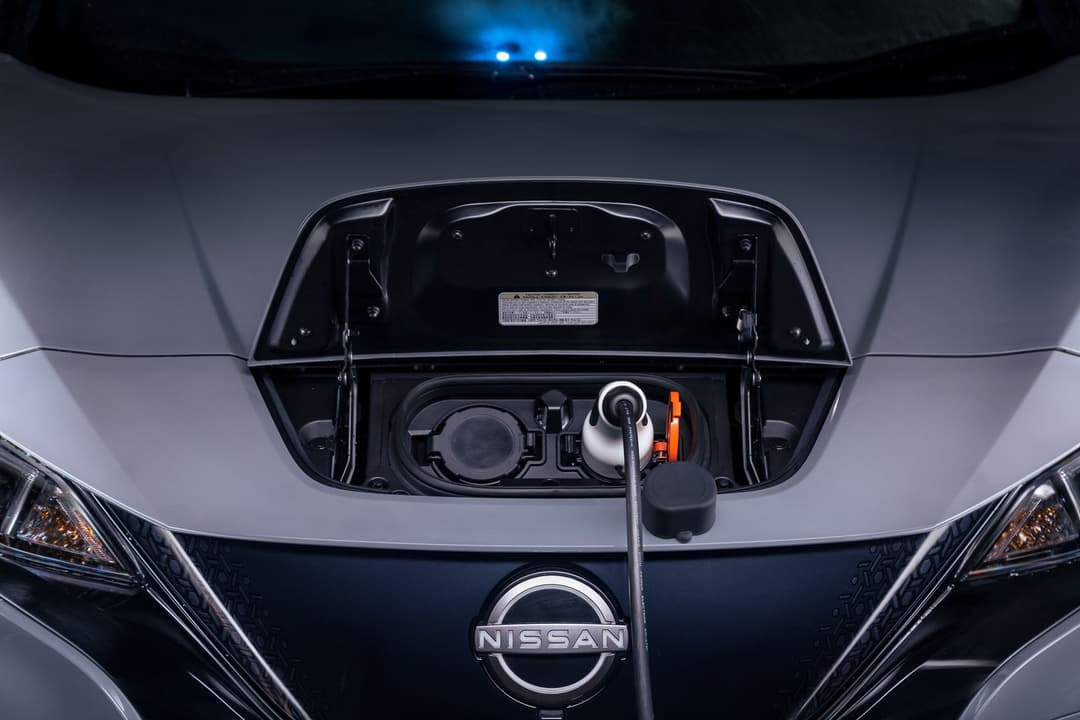
Using a standard 400-volt class architecture, the EV is able to charge at up to 50kW DC on the smaller battery standard Leaf and 100kW DC on the bigger battery Leaf e+. Both models are capable of up to 7kW AC charging
Importantly, it uses a Type 2 port for AC charging, but a rarer Japan-spec CHAdeMO connector for DC fast charging. It’s worth noting that nearly all other EVs adopt the CCS2 standard instead, but most public EV charging sites in Australia today still offer a CHAdeMO plug.
Nissan claims the base Leaf can recharge from 20 to 80 per cent in 60 minutes or on the Leaf e+ in 90 minutes when plugged in a 50kW DC fast charger with a CHAdeMO connector. When on a 100kW DC charger, the Leaf e+ cuts that charge time to 45 minutes.
Meanwhile, a full charge on a 7kW AC charger takes the base Leaf 7.5 hours or on the Leaf e+ around 11.5 hours.
The Leaf’s Type 2/CHAdeMO port is placed at the front centre of the vehicle besides the sloping bonnet.
Nissan includes a Type 2 to home socket cable and remains as one of the only EVs in Australia capable of bidirectional charging, including vehicle-to-home (V2H) and vehicle-to-grid (V2G). However, these technologies are still emerging in Australia and the Leaf also doesn’t feature vehicle-to-load (V2L).
The Japanese electric small car features one pedal driving abilities dubbed ‘e-Pedal’. When toggled on, the regenerative braking system slows the vehicle to a complete stop without touching the brake pedal.
Safety and technology
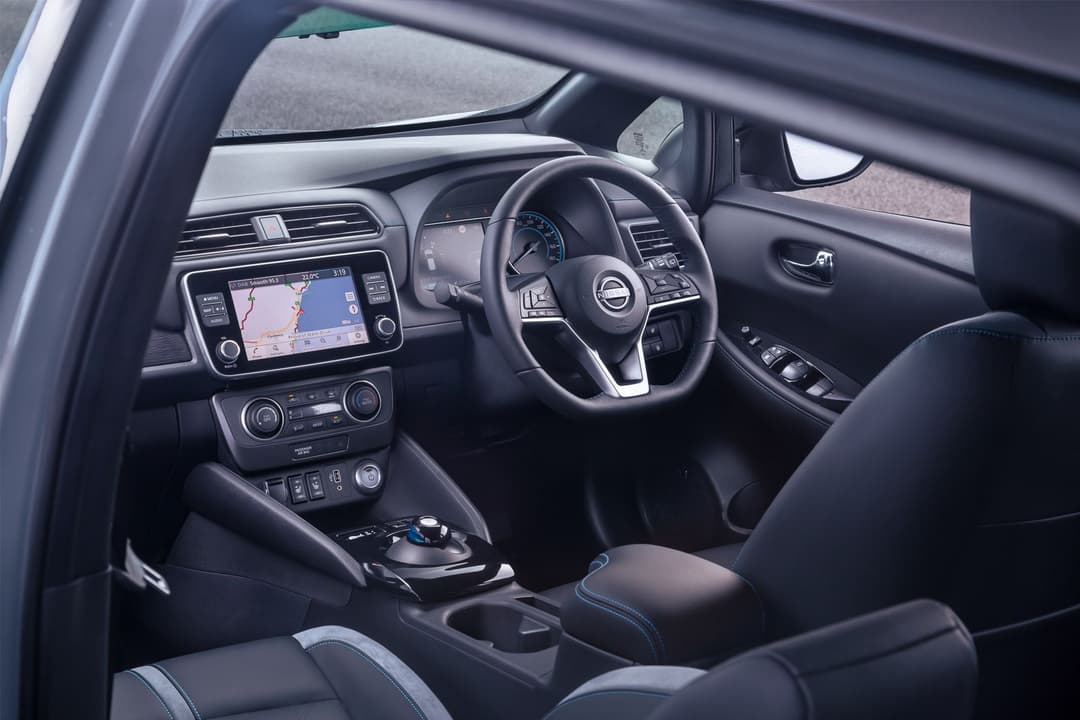
The updated Nissan Leaf has the same five-star ANCAP safety rating tested under the less stringent 2018 testing criteria from when it first launched.
As part of the update the Japanese carmaker has added a digital rear view mirror, which when flicked on, displays a camera view of what’s behind.
There’s also a new ‘Canto’ sound that warns pedestrians while driving under 30km/h, which varies in pitch when accelerating, slowing, or reversing.
Additionally, it carries over the same active safety assistance suite as per its predecessor. This includes automatic emergency braking with pedestrian detection, lane departure assist, blind spot alert, rear cross traffic alert, adaptive cruise control, high beam assist and traffic sign recognition on all models.
Australian-spec Leaf’s still miss out on the more advanced ProPilot system found overseas.
A 360-degree surround view camera with object moving detection and front and rear parking sensors are also standard.
The updated Leaf retains the same 8-inch touchscreen with Nissan’s own software with built-in maps, DAB+ digital radio, and wired Apple CarPlay and wired Android Auto. The driver is faced with a combined 7-inch TFT digital display and analogue dial instruments.
Sound is pumped through a seven speaker Bose “energy efficient premium audio” system on all Leaf’s.
Price and models
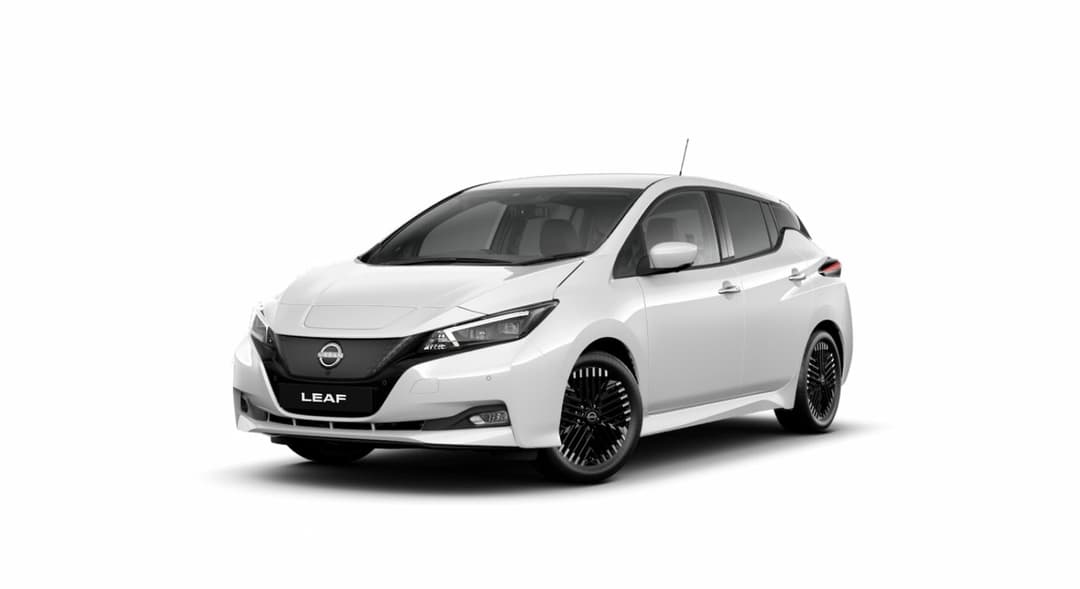
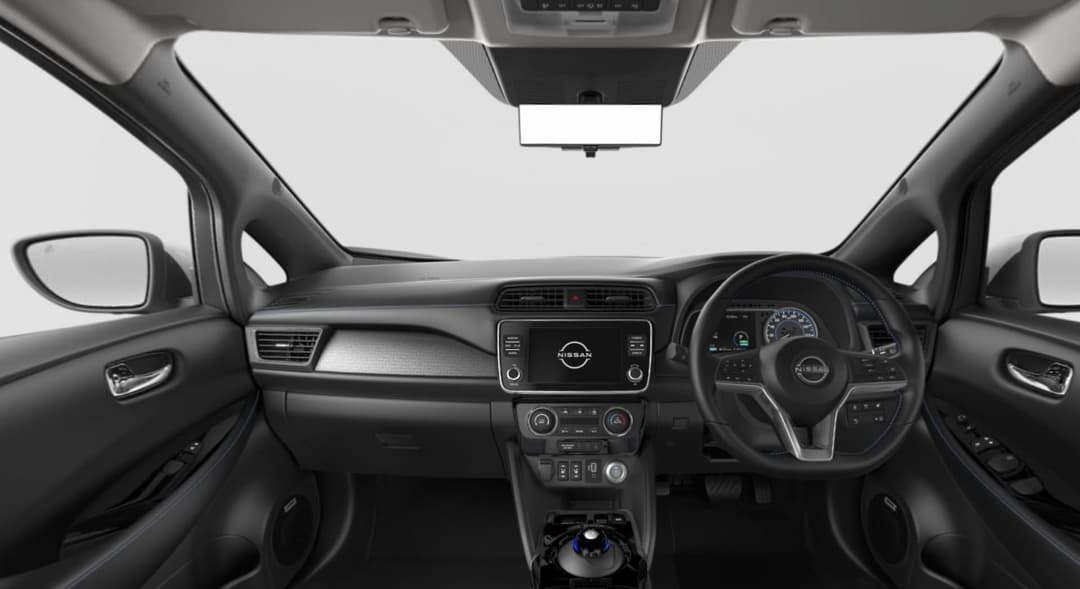
Leaf price: $39,990 driveaway
The standard Leaf comes with as standard:
- 39kWh (usable) battery
- 17-inch alloy wheels (new design)
- Safety assistance suite (details above)
- 360-degree around view monitor
- Front and rear parking sensors
- 8-inch infotainment system with built-in maps and wired Apple CarPlay and wired Android Auto
- 7-inch TFT digital driver’s instrument display
- Digital rear view mirror camera
- Seven-speaker Bose audio system
- Black leather accented seats with Ultrasuede inserts
- Heated front and rear outboard seats
- Six-way manually adjustable driver seat
- Four-way manually adjustable passenger seat
- Leather heated steering wheel (tilt-only adjustable)
- Shift-by-wire drive selector with e-Pedal mode
- Foot operated parking brake
- Single zone automatic climate control with onboard timer
- Proximity key with push button start
- Privacy glass for rear row
- Auto rain sensing wipers
- Auto dimming rear view mirror
- Auto LED headlights with high beam assist, LED daytime running lights and incandescent taillights
- Front and rear fog lights
- Heated power door mirrors
- Chrome door handles
- ‘Canto’ acoustic vehicle alert system
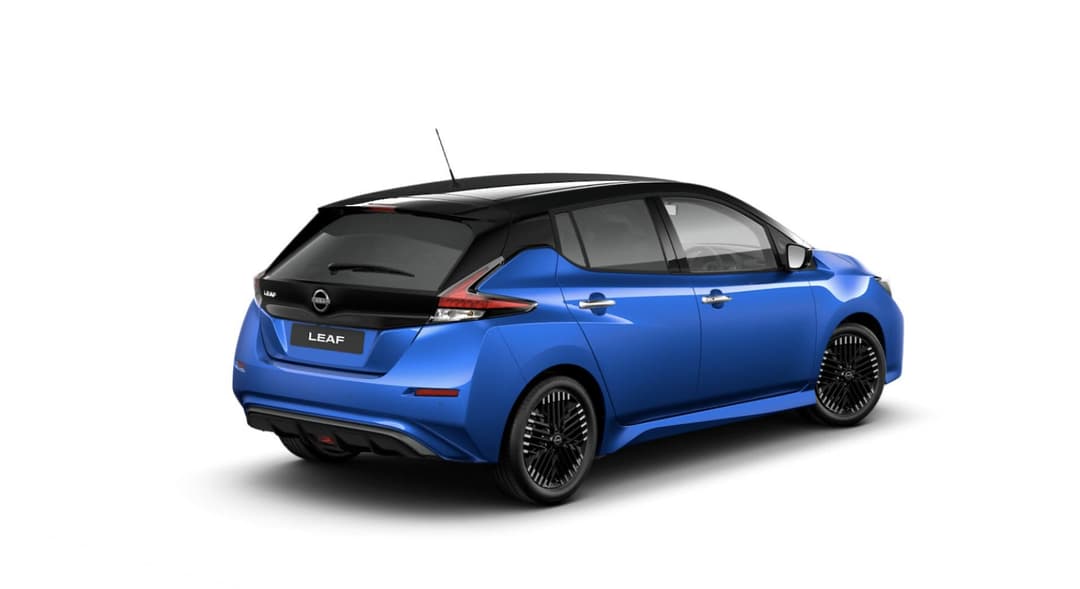
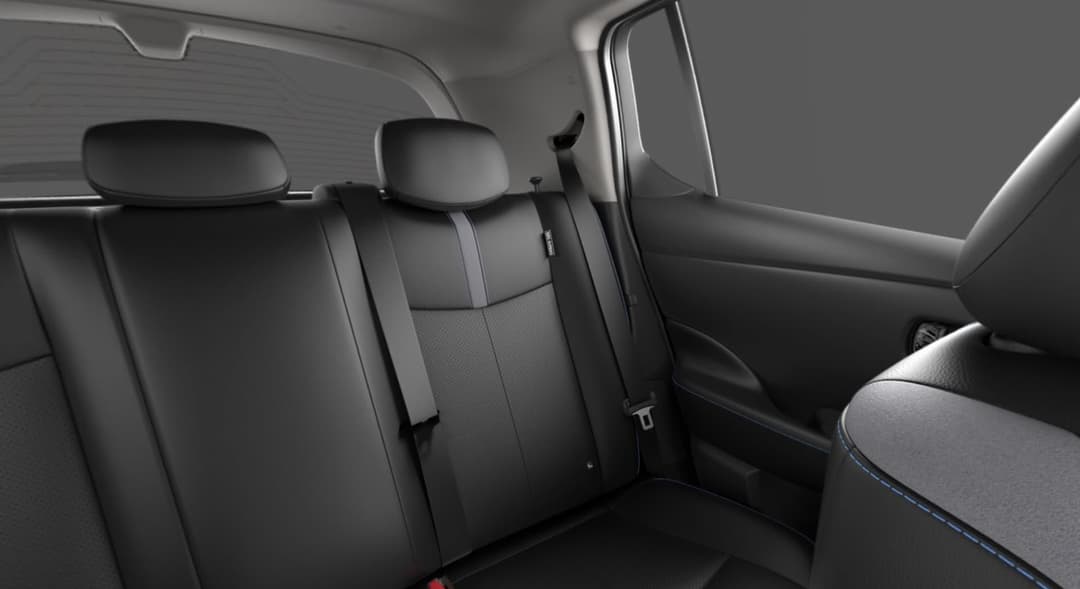
Leaf e+ price: $49,990 before on-road costs
The Leaf e+ gains:
- 59kWh (usable) battery
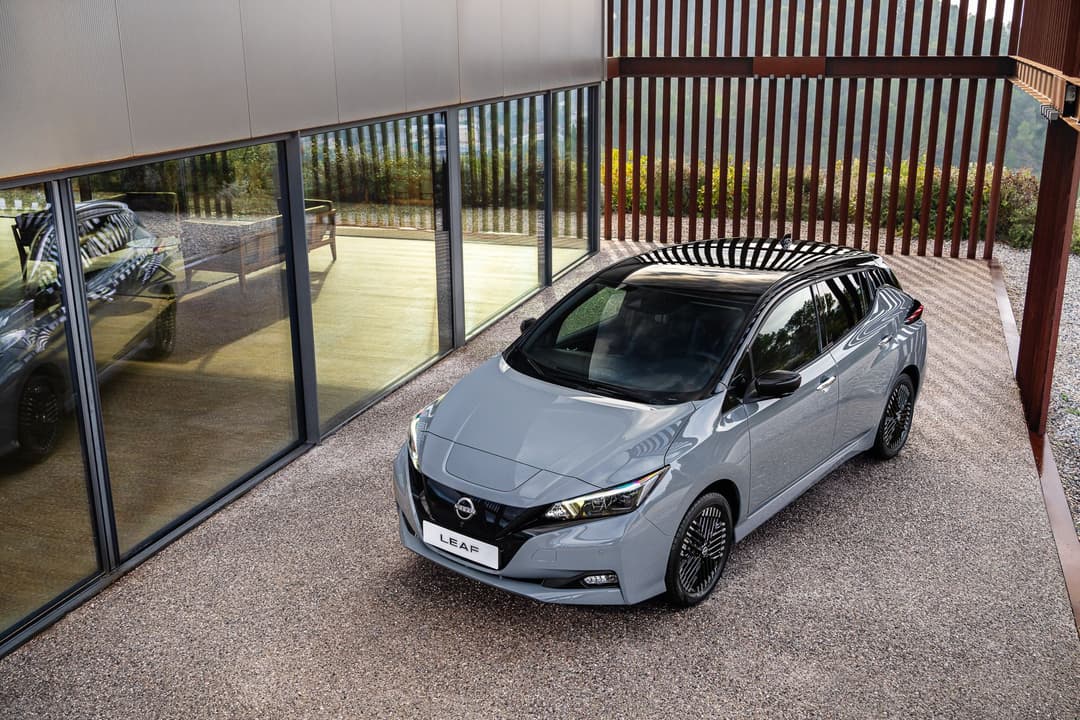
Nissan Leaf Options
- Standard paint – no cost: Arctic White
- Premium paint – $650: Gun Metallic, Black Pearl, Ivory Pearl, Flame Red, Dark Blue Pearl
- Two-tone black roof and mirrors paint – $1090: Grey Pearl, Blue Pearl, Magnetic Red, Silver Metallic, Ivory Pearl
Warranty and servicing
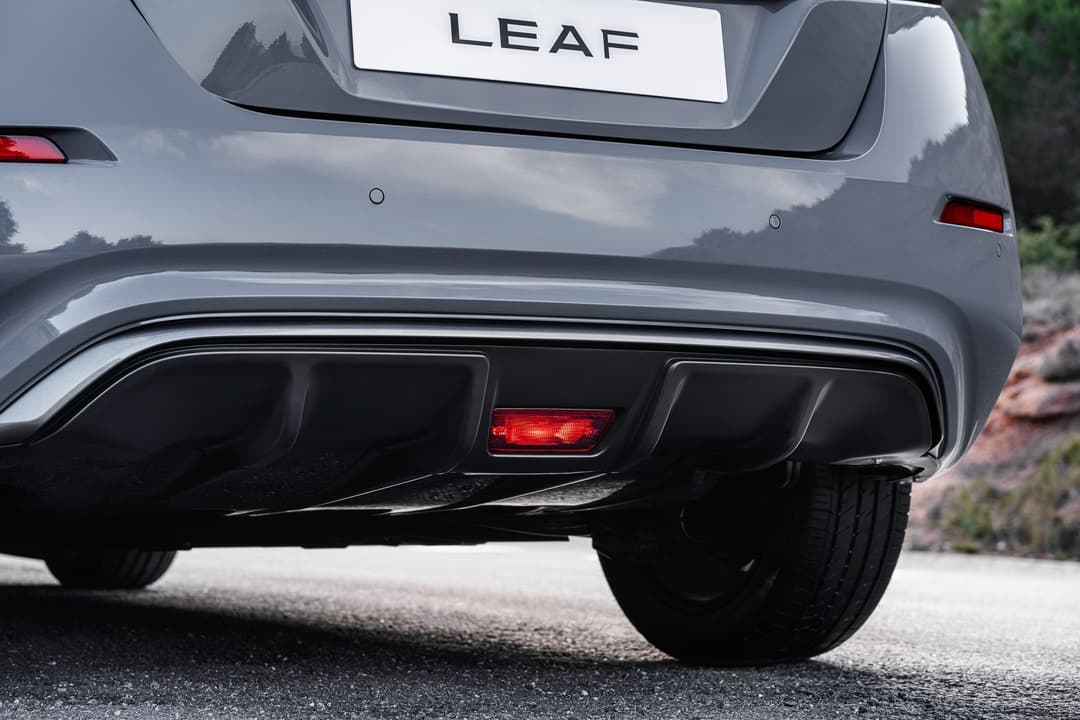
The Nissan Leaf is covered by a five-year, unlimited kilometre vehicle warranty and eight-year/160,000km battery warranty.
Five years of roadside assistance is included and scheduled servicing visits are required every 12 months or 20,000km (whichever comes first).
Nissan outlines capped price servicing costs for the first six visits. For the first five services, it averages to about $295 per visit.
How does it compare to other EVs?
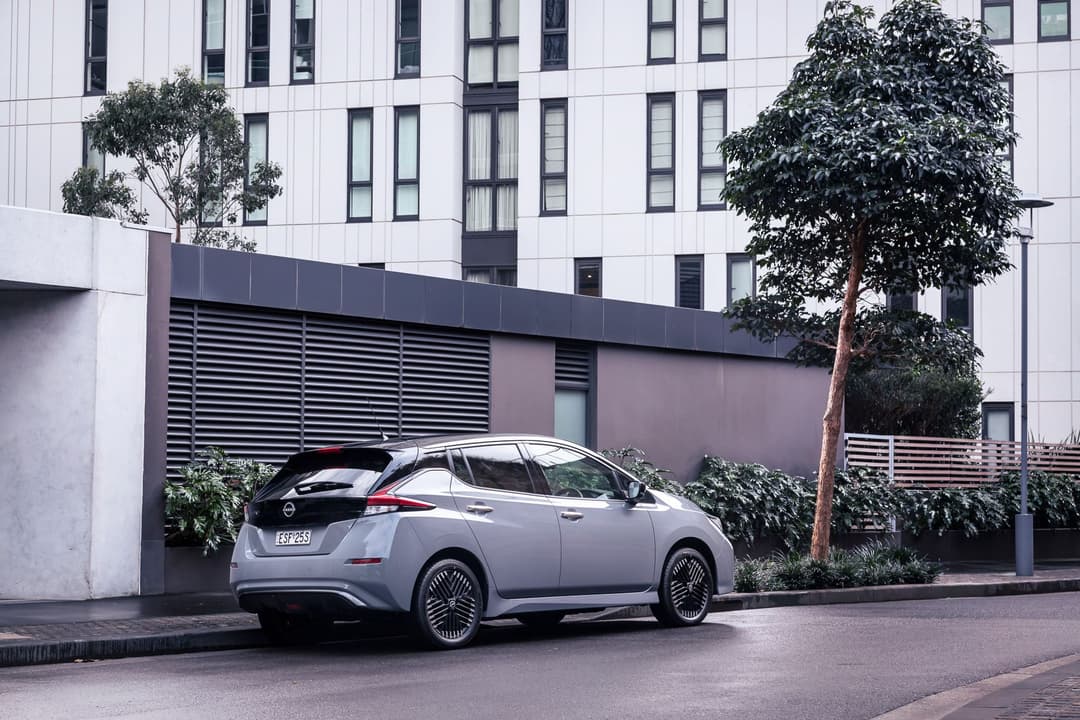
Nissan Leaf FAQs
Datawrappers by Danny Thai
Stay up to date with the latest EV news
- Get the latest news and update
- New EV model releases
- Get money savings-deal



